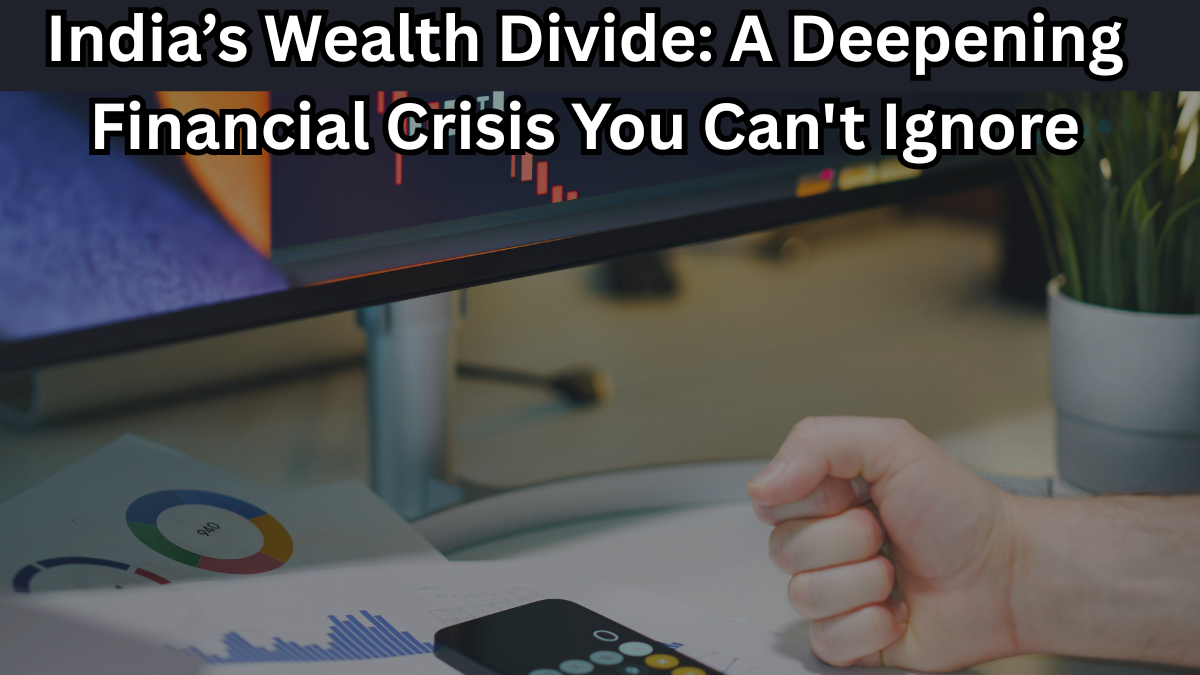India isn’t facing a banking or stock market meltdown—but a more personal and pressing crisis: the everyday financial vulnerability of its people. According to financial planner D. Muthukrishnan, nearly 50% of Indians have less than ₹3.5 lakh in total wealth. This isn’t just a statistic—it’s a wake-up call to the growing wealth gap in our society.
This concern isn’t unique to India. Across the globe, 90% of people would struggle to cope if they lost even a single paycheck. With AI, automation, and evolving industries transforming the workforce, the world is inching closer to a financial tightrope.
Let’s break it down: how serious is India’s wealth gap, what does it mean in the global context, and most importantly—what can you do to protect your financial future?

Understanding the Indian Wealth Landscape
What the Numbers Say
India has made impressive economic strides—but that growth hasn’t reached everyone equally. A small elite controls the majority of wealth, while the average Indian remains financially fragile.
Key Highlights from the UBS Global Wealth Report 2024:
-
50% of Indians own less than ₹3.5 lakh in total wealth.
-
Median wealth per adult: Around $4,000 or ₹3.3 lakh.
-
Only a tiny minority possess assets over ₹90 lakh, placing them in the global top wealth bracket.
A Global Comparison: Where Does India Stand?
Even wealthy nations show stark inequality when you compare average wealth versus median wealth. Here’s a closer look:
| Country | Average Wealth per Adult | Median Wealth per Adult | Wealth Insights |
|---|---|---|---|
| Switzerland | $685,000 (₹6 crore) | $167,000 (₹1.4 crore) | Top 1% owns 43% of national wealth |
| United States | $551,000 (₹4.8 crore) | $107,000 (₹88 lakh) | 4th in average wealth, 14th in median |
| India | $16,500 (₹13.7 lakh) | $4,000 (₹3.3 lakh) | 50% of population holds less than ₹3.5 lakh |
Takeaway: Even countries with high average wealth show inequality when looking at the median—indicating wealth is concentrated among a few.
The Global Wealth Gap: Who Really Owns the Money?
Muthukrishnan’s analysis paints a sobering picture of global inequality:
-
Top 1% of the world owns nearly half of all wealth.
-
Just 1% of adults globally are millionaires (owning assets worth $1 million+).
-
A whopping 90% of people worldwide would be financially vulnerable if they missed just one salary.
Even in developed countries:
| Country | Wealth Concentration Facts |
|---|---|
| Switzerland | Top 7% hold over 70% of national wealth |
| United States | Wealthy 1% outpaces rest in earnings and assets |
Reality check: Global wealth is highly concentrated, making middle- and lower-income groups especially vulnerable during economic disruptions.
The Role of AI & Automation in Economic Insecurity
How the Workforce is Being Reshaped
AI and automation are no longer future concepts—they’re happening right now, reshaping industries across the globe.
What’s Changing:
-
Job Displacement: Routine jobs are being replaced by AI—from data entry to factory work.
-
Wage Stagnation: Salaries aren’t keeping pace with inflation and skill demands.
-
Minimal Social Security: Countries like India lack strong unemployment benefits, increasing risk for workers.
Upskill or Fall Behind
India, with its labor-intensive sectors, is especially vulnerable. Without strategic upskilling and financial literacy, economic inequality could worsen drastically.
Securing Your Financial Future: What You Can Do Today
Here’s the good news: You’re not powerless. With a few proactive steps, you can start securing your financial stability.
Actionable Strategies for Every Indian
-
Diversify Your Income
-
Explore side hustles, freelancing, or passive income sources.
-
-
Invest in Skills
-
Learn emerging skills like AI, digital marketing, coding, or cybersecurity.
-
-
Build an Emergency Fund
-
Save enough to cover 6–12 months of living expenses.
-
-
Smart Investments
-
Consider SIPs, mutual funds, gold, or real estate—aligned with your goals.
-
-
Increase Financial Literacy
-
Understand savings, investments, and taxes to make informed decisions.
-
FAQs:
1. Why is India’s wealth distribution so skewed?
India’s economic growth has largely benefited the top tier, while a lack of widespread financial education, access to quality jobs, and social security programs keeps the majority with minimal assets.
2. How can AI worsen financial inequality in India?
AI is replacing many routine jobs. Without proper upskilling, large segments of the workforce may lose employment without alternatives—widening the wealth gap.
3. Is average wealth more important than median wealth?
No. Median wealth gives a better picture of what a typical individual owns, while average wealth can be skewed by billionaires at the top.
4. What are some good ways to start building wealth with low income?
Start small: use SIPs in mutual funds, open a PPF account, automate savings, and keep learning new skills that improve your earning potential.
Final Thoughts
India’s financial inequality is not just a statistic—it’s a personal crisis for millions. As the job landscape evolves, the need for financial resilience has never been more urgent.
Click here to learn more
